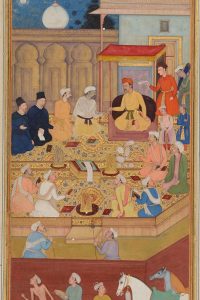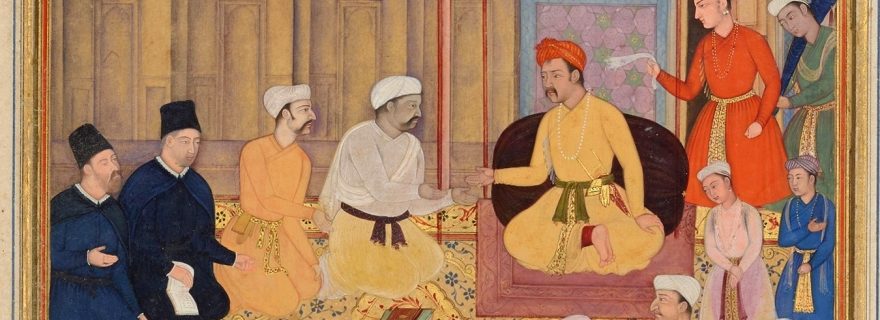The Mughal Experiment with Islamic Extremism: A Sixteenth-Century Lesson for Today
Religious extremism is not limited to Islam or to the present. Said Reza Huseini delves into the past to find a policy that actually worked: Mughal Emperor Akbar’s “Peace with All” ideology.
The latest wave of Islam-inspired violence in Europe, makes Islamic extremism seem like a seasonal flu without a cure. Certainly, extremism is a phenomenon that can pop up in any religious community. The main pattern is always the same: it divides humanity into those that are right and those that are wrong, in which “the righteous” are above man-made laws. How did earlier societies deal with this? Can we learn from history and find a “cure”? In this blog, I will address Islamic extremism in the time of the Mughal Emperor Akbar (r. 1556-1605) who managed to find a solution.
In the early Mughal Empire, orthodox mullahs were known to misuse their position, claiming to be the sole interpreters and defenders of Islam. For example, in 1567, the Muslim orthodox scholar Shaikh Abd al-Nabi ordered the exhumation of the remains of Mir Murtaza Sharifi Shirazi from the vicinity of Amir Khusrau’s tomb in Delhi on the basis that the former was a Shi’ite (and thus “polluted” the area where Amir Khusrau was buried). A decade later, he ordered the execution of a Hindu Brahman who had insulted Islam and its Prophet. Not much later, with the help of another orthodox mullah, he prosecuted Shaikh Mubarak Nagori who preached philosophy and believed that political authority had to be removed from the hands of the mullahs.
These are but a few examples of how orthodox mullahs oppressed those with a different view, Muslim and non-Muslim alike. At a certain point, Emperor Akbar had had enough and decided to terminate the mullahs’ monopoly over religion. Akbar was the third king of the Mughal empire, that was established by the Timurid Prince Babur in 1526. Having been born in India, with its diverse population of Hindus, Muslims, Christians, Zoroastrians, Jews, Jains, Buddhists, and others, Akbar was well-aware of the concept of religious diversity. To solve the problem of religious extremism and find a way to harmonise such a diverse society, he launched a special programme.
In 1579, Akbar commissioned the construction of the Ibadat-khana or “divine house”; a place designed to facilitate discussion on Islam. Gradually, scholars from other religions, like Hinduism, Christianity, Judaism, and Zoroastrianism, were also invited into the dialogue. Thus, the Ibadat-khana turned into an academy where scholars met, discussed, and worked together on translating or producing texts. The debates were not always peaceful; with sacred texts in hand, scholars accused and threatened one another, and even challenged each other to enter into the fire to test whether God would save them and their books. The Ibadat-khana thus taught Akbar about different religions, but also about the madness that they could create if followed blindly. He realised that so-called defenders of religion had their own political and economic agenda’s and misused their religious authority to secure these. Labelling their opponents as “unbelievers” was a tried-and-tested method to diminish or even eradicate their power.


Akbar eventually selected a group of scholars, mostly with a philosophical approach, to formulate his new political ideology; a theory that came to be known as Sulh-i Kull, “Peace with All.” This ideology was designed by a group of Avant-Garde Neoplatonists and had two main foundations. First came the importance of Ethics (akhlaq), partly based on the works of Persian scholars like Nasir al-Din Tusi (d. 1274) and Jalal al-Din Dawani (d. 1502). Akhlaq preached that one should think about “the Self” and its achievements, and emphasised that differences are an essential part of creation and, as such, have to be accepted and respected. Coming to terms with this reality would lead to peace with “the Self” which in turn would lead to peace with others.
The second foundation was Mongol religious tolerance. Akbar had inherited this legacy practised by the Timurid rulers in Iran and Central Asia. By combining the Persianate akhlaq with Mongol religious tolerance and adding some other philosophical ingredients like “Unity of Existence” (wahdat al-wujud), preached by the Spanish Muslim scholar Ibn Arabi (d. 1240), and “Indian monism,” the Mughal imperial ideology of “Peace with All” was created. In this theory, diversity is the first reality and the first principle for any ruler. According to Akbar, religions created division among human beings, but the ruler (or the state) should not let one group of preachers force their religion upon the rest of humanity, but create an environment where different views can co-exist.
To bring his theory into practice Akbar enforced a systematic policy. He tried to create awareness of different religions by making their sacred texts available through translation. Furthermore, he stimulated religious discussion and interpretation through reason/insight ('aql). If people were equipped with the knowledge, they would be less inclined to blindly follow extremist mullahs (or extremist leaders from any other creed). He also introduced a series of regulations and limited the physical space for extremist mullahs’ activities.
Akbar’s experiment was successful as it facilitated the very diverse Indian society to live in religious harmony for three centuries after him, with very few incidents disturbing the balance. The political ideology of “Peace with All” became an issue of pride for the Mughal emperor, who addressed the Safavid and Uzbek kings and the western scholars that they should accept and respect diversity in human society. It became the core element of the Mughal administration in India and remained in place until India became a part of the British empire. Colonial rule systematically removed it and purposely created a Hindu-Muslim division that holds this region hostage till this day.
Akbar’s policy of “Peace with All” is as relevant today as it ever was. Its most important lesson is that one cannot combat an ideology through violence. Instead one should uproot religious extremism by removing the “tools” used to justify that ideology. Akbar’s experiment shows that the best way to deal with extremism, is to enforce an ethics-based education in which one can learn about human dignity and the necessity of its protection. In the view of the philosophers who formulated Akbar’s political ideology, human reason (‘aql) should be used at all levels, and gained knowledge (‘lm) should be mixed with ethics. The combination of “Reason, Knowledge, and Ethics” would then become Wisdom (khirad). It is this Wisdom that will provide an antidote for extremism and eventually lead to a better society. In his India, painting the images of the Prophets not only did not provoke religious outrage, it actually allowed people to express their understanding of the Prophets and communicate through them without any fear. The universal mutual respect that was preached in the sixteenth century, is something that we can all still learn from today.



0 Comments